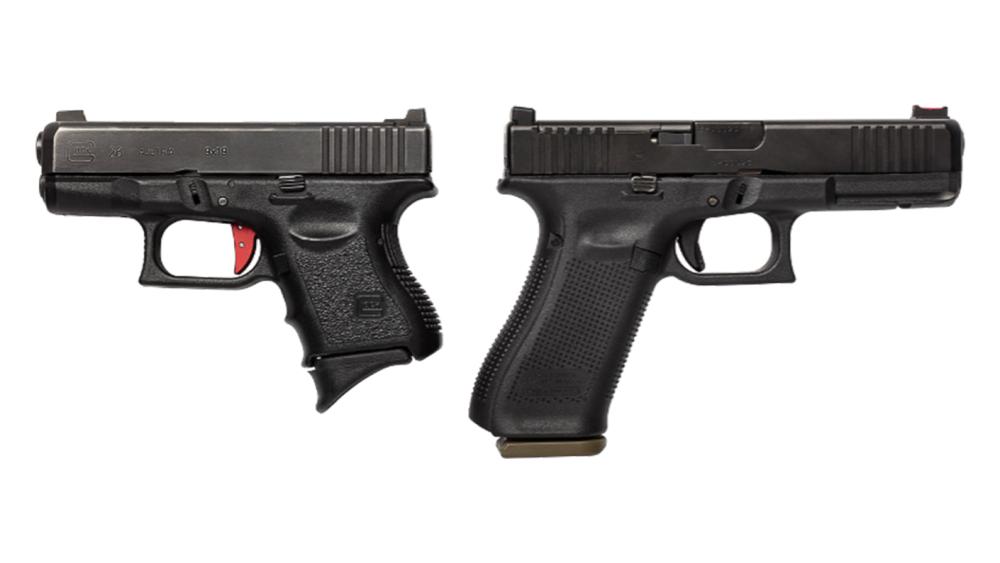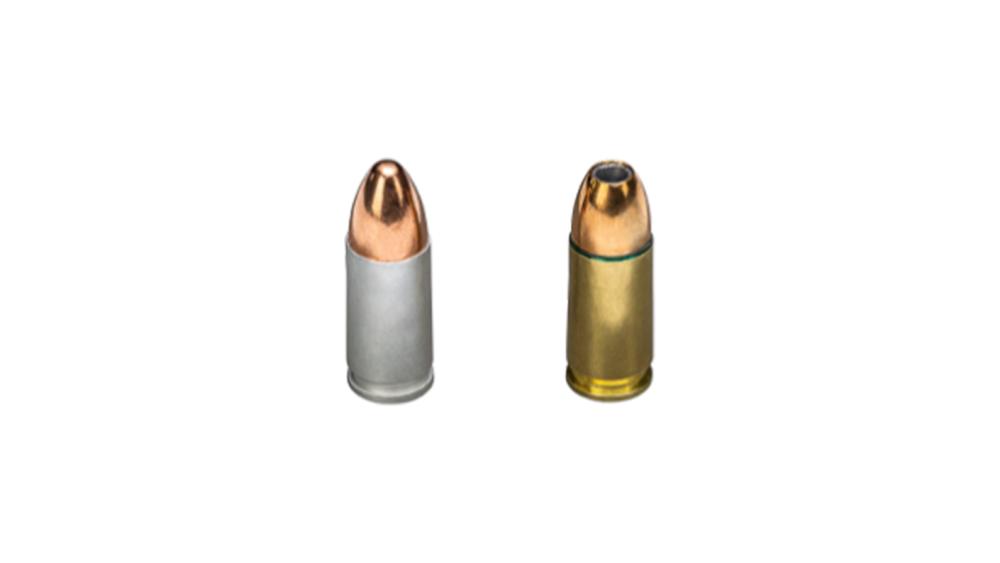HOW TO CHOOSE A PISTOL
Take the confusion out of buying a handgun with these tips from the pros at Vortex Edge®

WHAT TYPE OF PISTOL SHOULD YOU BUY?
It’s Important to find something that has a long track record of reliability. Modern pistols designed for recreational, defensive, and/or professional duty use generally follow the pattern of being polymer-framed, striker-fired guns, and we recommend sticking to something in that category.
- Striker-fired
- Polymer

There’s nothing wrong with the pistol on the right, but for beginners, we recommend striker-fired, polymer framed pistols (like the one on the left) for their ease of use and ownership.
WHAT SIZE PISTOL SHOULD YOU BUY?
For a beginner shooter, it’s important to choose a handgun that’s easy to shoot. All else similar, larger framed handguns offer more leverage and surface area for your hands to grip, which are both crucial for managing recoil. (Get more on why full-size can be better with this podcast).
Smaller framed handguns, while slightly easier to conceal, will have higher felt recoil, lower capacity, and present an overall less enjoyable shooting experience. As far as capacity, something that has a capacity of at least 10 rounds in the magazine provides an adequate number of rounds for both carrying and training.
- Compact to full-size (ex: G19-G17)
- Single stack vs Double stack
- Hand fitment – reach the controls

Bigger pistols are easier to shoot, and as a bonus, you’ll be able to carry more ammunition.
WHAT AMMUNITION DO YOU NEED?
In recent years, there have been advances in development and manufacturing of ammunition that have increased the capability and performance of the 9mm round. Using 9mm will allow you to carry more rounds that meet and exceed the performance of other common defensive calibers such as .40 S&W and .45 ACP.
It’s also important to note the differences between defensive rounds (such as Jacketed Hollow Points or “JHP”) and training ammunition (such as Full Metal Jacket or “FMJ”). FMJ ammunition will be much more affordable to train with, and jacketed hollow points perform much better in defensive situations.
- Caliber: 9mm
- Defensive vs Training ammunition

FMJ ammunition, like the round on the left, is cheaper and perfect for training. When selecting an ammo for defensive use, we recommend JHP ammo, like the round on the right.
OPTIC COMPATIBILITY
All our instructors use red dots on their pistols. Red dots on pistols offer huge advantages to shooters of any level. They make it easier to imprint an acceptable sight picture on target, allow the shooter to stay focused on the target rather than their sights, and perform excellently in low-light conditions.
While you can modify nearly any gun to accept a red dot by way of milling your slide, most firearms manufacturers offer optics-ready handguns that come prepped for a red dot right out of the box! (For more on using red dots on pistols, check out this podcast and this blog).
- A red dot will be more intuitive to learn than iron sights
- Look for companies that offer an optics-ready gun

Being able to quickly and easily mount a red dot on your pistol can help you get shooting accurately quicker. Look for handguns that come ready for optics.
HOLSTER SELECTION
We recommend purchasing a high-quality, well-designed holster to accompany any new handgun. A holster acts as an additional layer of safety by providing an impenetrable barrier that completely encloses the trigger guard and that will not fold in or collapse on itself.
The best holster material in our experience is Kydex due to its reliability and rigidity, as opposed to leather, nylon, or neoprene-style holsters. Even if you do not plan on carrying your handgun on your body, a holster is still a good idea as it provides a safe way to store and transport your gun. Your holster should have clips or loops that prevent the holster from moving during repeated drawing and re-holstering when wearing it on your body. (For more on the best way to carry your weapon, check out this podcast).
- Holsters add a layer of safety
- Impenetrable material such as kydex
- Completely encloses the trigger guard
- Nothing that collapses or folds in on itself
- Sturdy belt clips

The right holster keeps your weapon accessible AND helps you stay safe by completely enclosing your trigger.
ADDITIONAL ACCESSORIES
If you plan to use your handgun for home defense or concealed carry, it might be a good idea to consider the addition of a high-quality, high-output, weapon-mounted light such as the Surefire® X300u or the Streamlight® TLR1HL. Some other considerations would be purchasing additional magazines, mag pouches, a shot timer to record and track your training progress, as well as eye and ear protection. (For a deeper dive into everyday carry essentials, check out this blog).
- WMLs
- Extra magazines
- Shot timer
- Quality eye and ear protection
It’s our hope you can learn and laugh along with the expert voices we feature on this blog. We want to be clear that the opinions you see featured here are just that: opinions. The content belongs to the authors and is not necessarily the opinion of Vortex Optics.
To learn more about what you’ve read, please like, follow, and otherwise support our authors.










